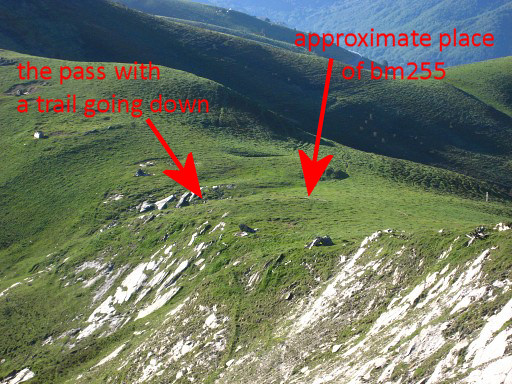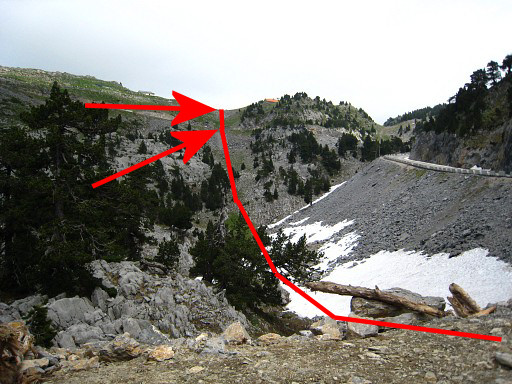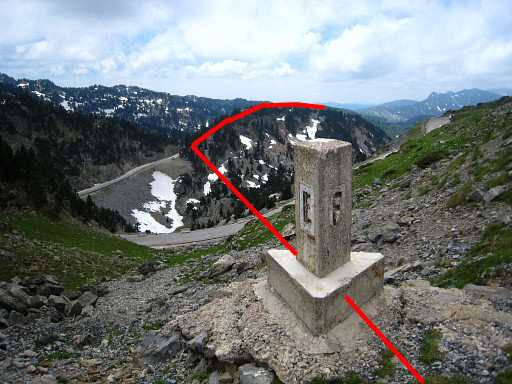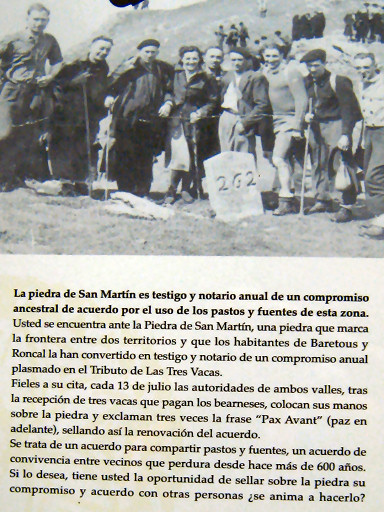|
The
bordermarkers of the Pyrenees : all my trips
|
|
| - 3 june
2009 - Two questionable bordermarkers  previous
trip next
trip previous
trip next
trip 
|
 |
 |
esfr-trip-track-20090603.kml (click to open in Google Earth or copy link to Google Maps; click right on this link to download gpx-version) Part of a 16-days trip, using day 1-10 to cover bm154 to 264 in the eastern Pyrenees and day 11-16 for bm416 to 365 near Bagnères-de-Luchon. Day 10: continuing along the borderline from bm255 to bm264, finishing in Arette-la-Pierre-St-Martin. Weather: splendid, the wind a lot less, in the afternoon cloudy but still warm. |
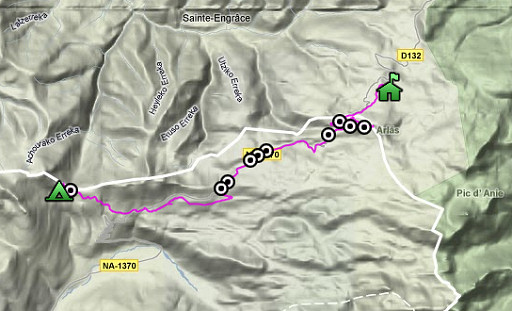 |
For explanation of
the gps-coordinates and other cartographic backgrounds: see my cartography page En route: 7.45-17.45, 9.35h, break 1h According to my watch: up 960m down 644m = 1604m in total. Hmax 1884m Lmin 1313m |
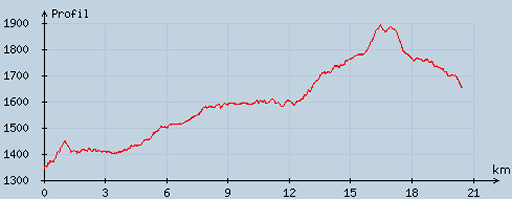 |
According
to visugpx - distance : 20.56 km - cum. elevation gain : 665 m - cum. elevation loss : 347 m - total elevation: 1012 m - altitude maxi : 1893 m - altitude mini : 1343 m - altitude average : 1603 m |
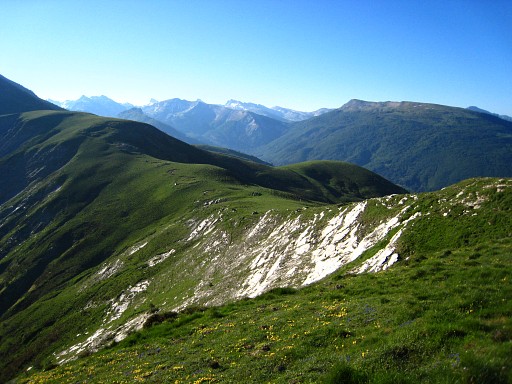 |
Starting at 7.45am between a herd of cows. I climb back to Port d'Ourdayté and search again in vain for bm255. This picture: a view from SEE to the Port. |
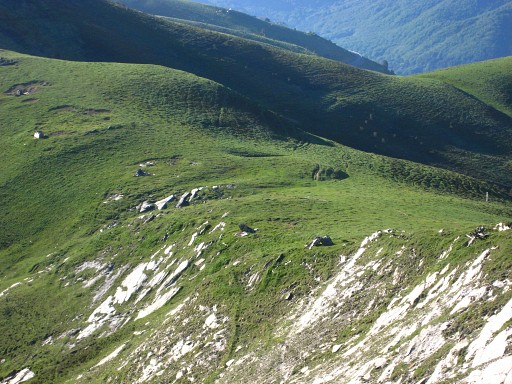
|
This is a zoom-in. Move the mouse over the picture to see the approximate place of bm255. There's no trace of bm255, neither of a base or likewise. I think I can identify its location pretty well: 40m west of the path that crosses the Port. Robert Darrieumerlou shows a 'menhir-like rock on this page which is located further east towards the Port de Cortaplana and which he assumes to be the marker. But I will learn later that bm255 did stand at Port d'Ourdayté but disappeared in september 2007. |
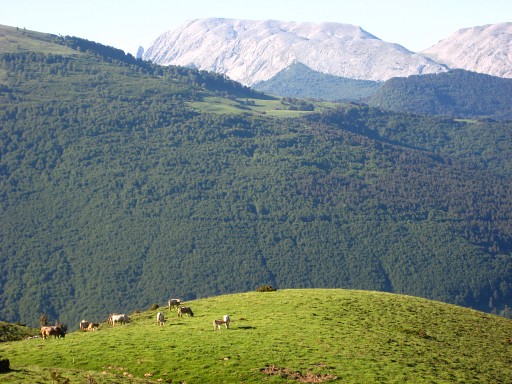 |
This picture: just a mountain view. I descend SE on the red-white trail that crosses the road later on and |
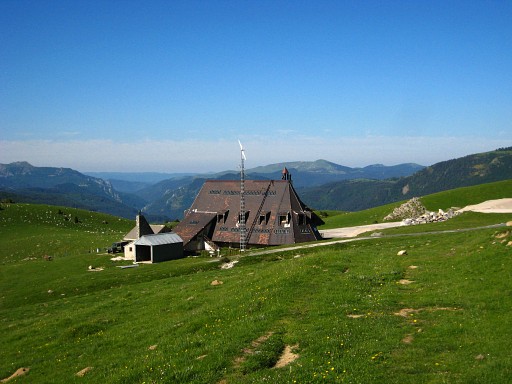 |
arrives at the Refugio Belagua (closed since several years). The red-white waymarking stops here but on the other side of the access road, a grassy dirtroad continues underneath the tarmac road. You can allways climb to the tarmac road if you wish to. The dirtroad winds a bit and fades away as a dirtroad underneath the Errayziko Lépoua-pass. A bit further you can climb along the hillside on a trail to the pass. This is a nice GRPdesBF-stage, better than on the tarmac road. |
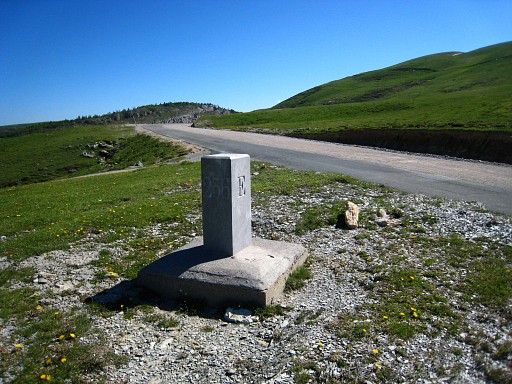 |
At the Errayziko Lépoua-pass: bm256. |
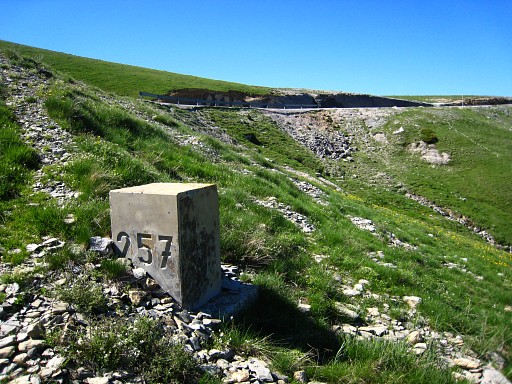 |
I continue on the road and suddenly I see left underneath the road: bm257. But that's too early according to the Procès-Verbal. Perhaps it has been replaced because of the construction of a large parking near a restaurant / mountaineering-center. |
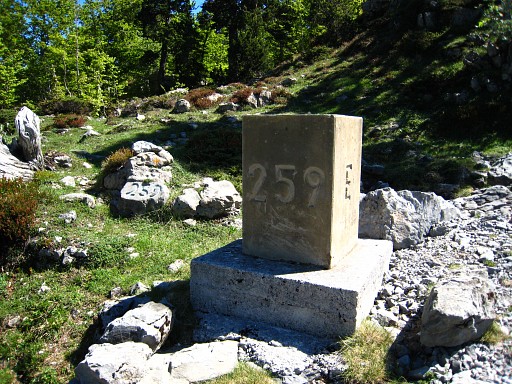 |
I continue and spot - to my surprise - bm259, pillar and cross, left of the road. In 2010 I will learn that this bm was moved from another place to this spot around 1985. The same was done with bm258 in order to facilitate a more straight new road. Two triangular pieces of territory of equal size were interchanged between France and Spain. See this pdf with a map of it. |
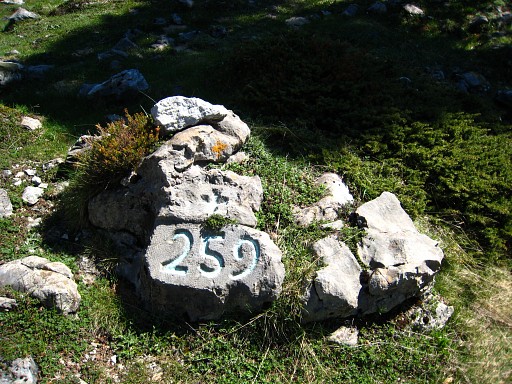 |
Bm259 |
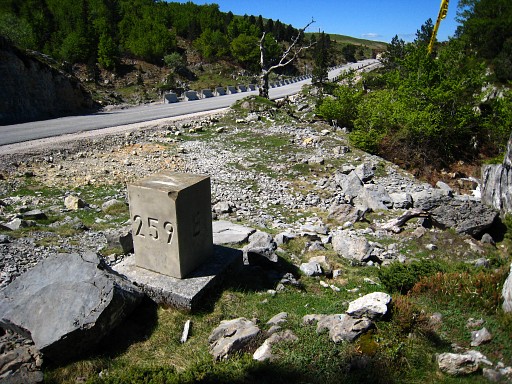 |
Bm259 |
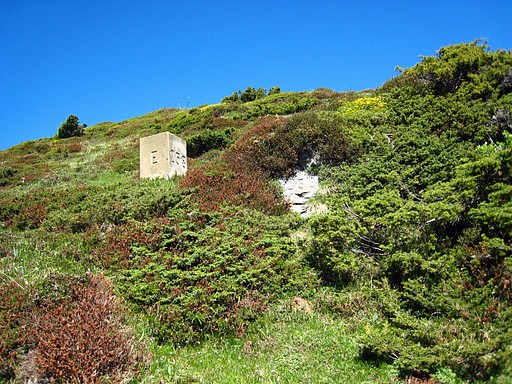 |
But I missed bm258 and return. I find it somewhat higher and further from the road: bm258, pillar and cross. In 2010 I will learn that this bm was moved from another place to this spot around 1985. The same was done with bm259 in order to facilitate a more straight new road. Two triangular pieces of territory of equal size were interchanged between France and Spain. See this pdf with a map of it. |
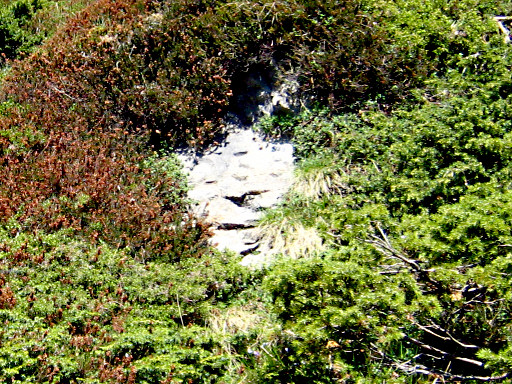 |
Bm258, a zoom-in from the previous picture. |
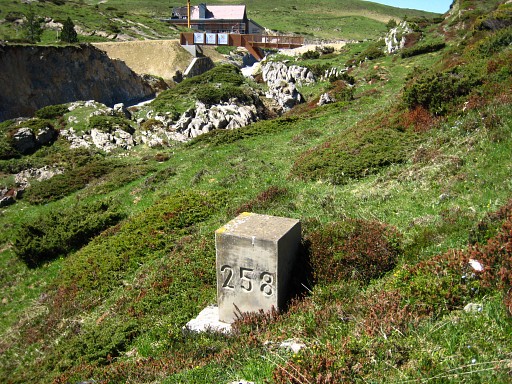 |
Bm258 |
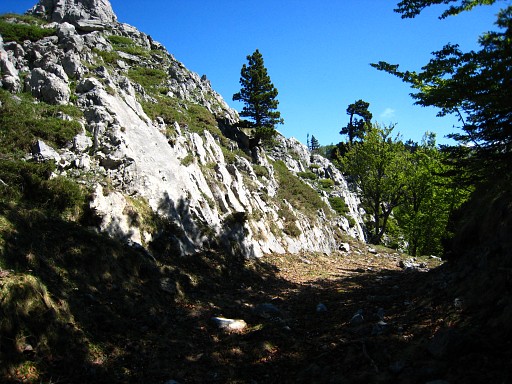 |
The next bm is correctly indicated at the map: above a tunnel, a bit to the N where the old road (?) is still visible. It is a bit difficult to climb to it from the W as I did. It's easier to walk through the tunnel and then - at the left side - climb back to above the tunnel. Then you're immediately at the old road. Bm260 |
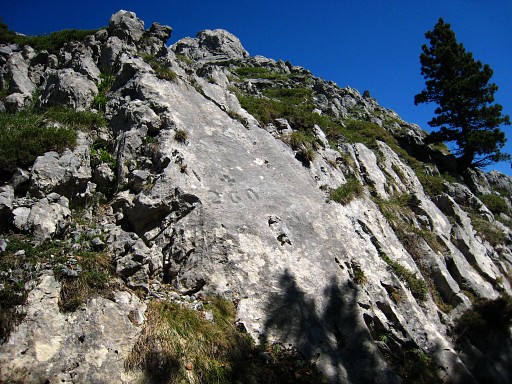 |
Bm260 |
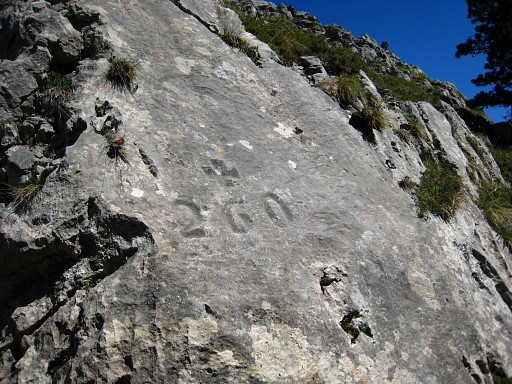 |
Bm260 I continue on the road. A bit further, the road bends to the right and climbs to a pass. After the first 'complete' bend, you'll see a rockwall N of the road. Climb to it and go along it to the right, that's a shortcut to where the road has just made a 'looping'. Time for lunch. |
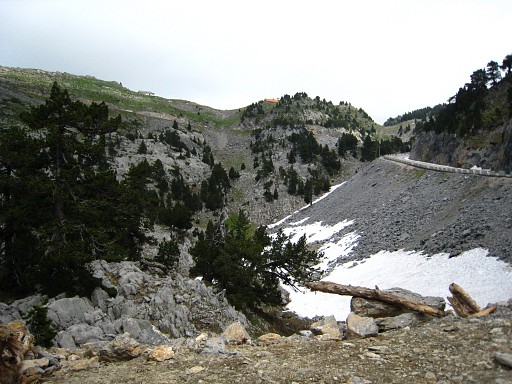
|
Then further on a search for bm261
which is not indicated at the map. From the Procès-verbal I conclude
that bm261 must be located where the border meets the road. The "Col
Léche ou Leja" of the PV is not indicated on the map. This picture: from that point I look forward in the direction of Col de la Pierre St-Martin. The border seems to go straight ahead, so descending in the valley in front and climbing to the col. |
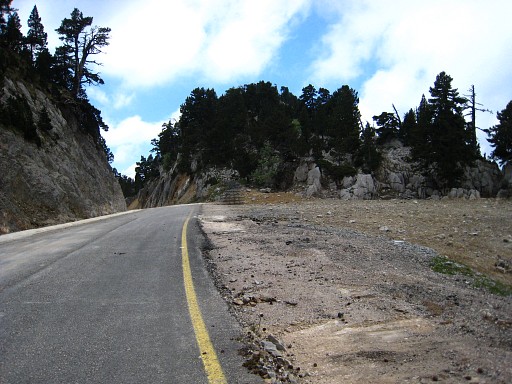 |
This picture: from further on the road
looking back to the point where border and road meet (I think). I
search in that rocky part but no trace of a bm. I wonder how the road-situation was in the 19th century. But Robert Darrieumerlou did an excellent job by localizing in 2010 the cross on a different spot then on the current borderline, see this page |
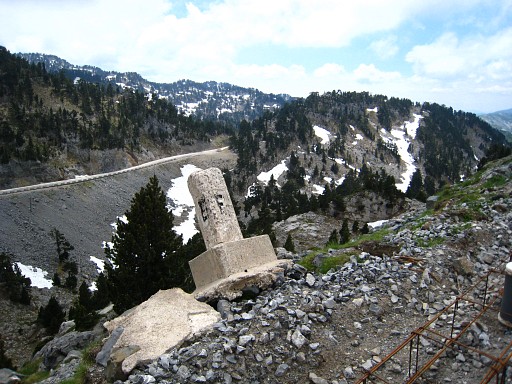 |
Then further along the winding road to Col de la Pierre-St. Martin. Along that winding road there's an unnumbered bordermarker, making the straight borderline explicit from the assumed spot of bm261 to bm262. But there are two of these unnumbered bordermarkers, this is the first one. |
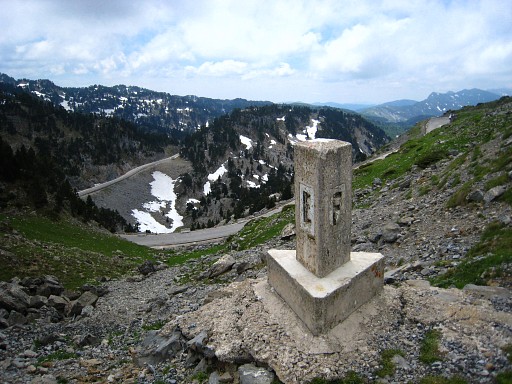
|
The second one is close to bm262 and overlooks the first one besides the road down below. Move the cursor over the picture to see the borderline. |
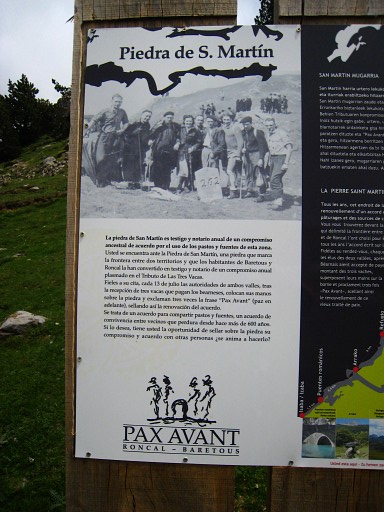
|
Close to bm262, this information panel. Move the cursor over the picture to see the text in close-up. |
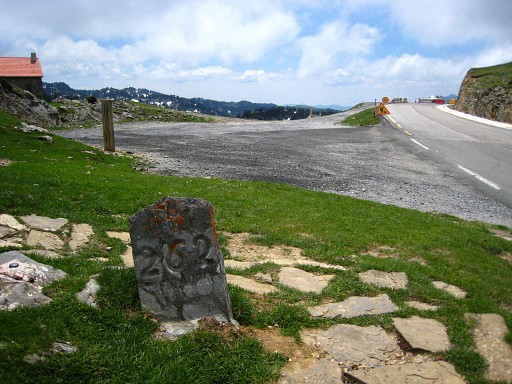 |
Bm262 |
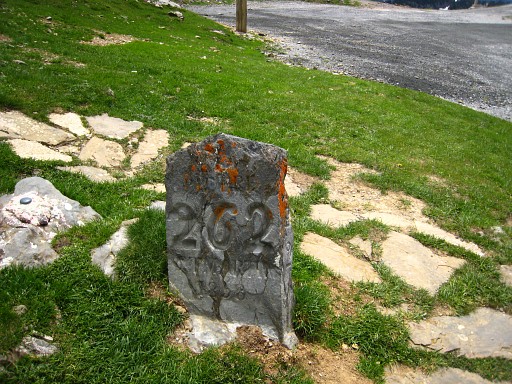 |
Bm262 |
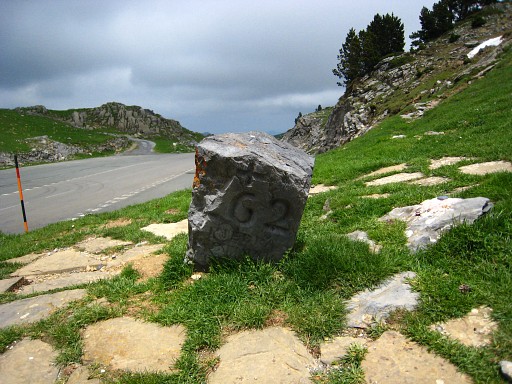 |
Bm262 |
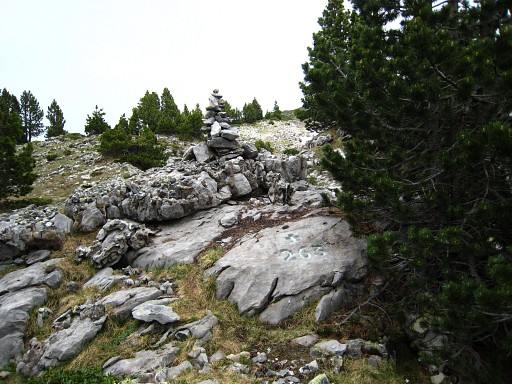 |
At bm262 the border bends to the SEE. It follows the "ligne de crêtes", the linr of the ridges, but that 'ligne' is difficult to recognize in this uneven rocky landscape. First I go too far N but then I find with help of my compass - and with some luck - bm263 An indication: look for a narrow ridge with pine trees, on the bm there's a large cairn. |
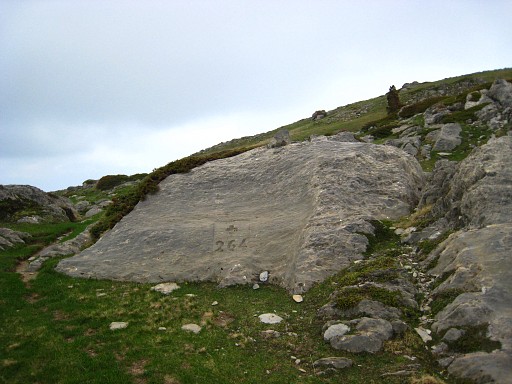 |
I continue, the ridge getting more distinct now and I climb to a hill which looks upon the end of a ski-lift and Col d'Arlas. I realize I'm too far now, on the map I see that bm264 is not on this hilltop but a while back on the hillside. I go back and a small cairn gives the clue for finding it: bm264. |
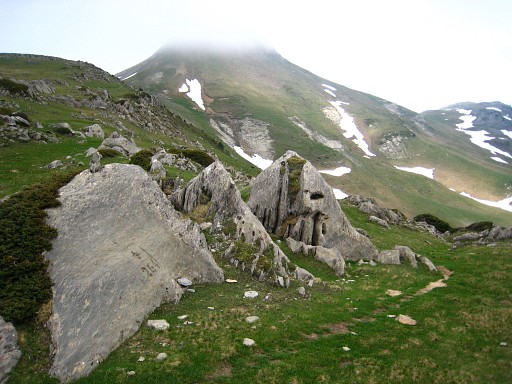 |
Bm264 I don't continue when I see that the trail underneath the Pic d'Arlas is snow covered. |
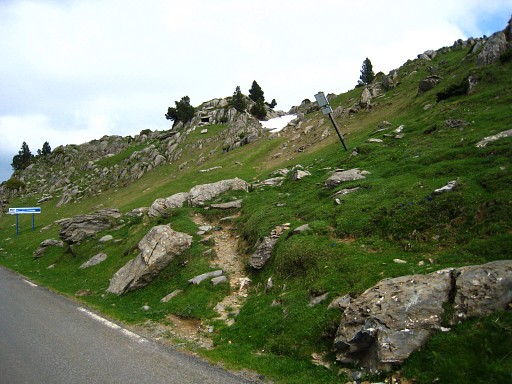 |
Back to the Col de la Pierre
St-Martin. I follow a yellow waymarked trail - loosing it later - but
bringing me to a distinct path which leads to a building ±75m S of
bm262. Perhaps that trail suits the GRPdesBF, leaving bm263 and bm264 at your right hand. In that case remember: - bm263 is on that hillridge with pine trees -bm264: when the yellow trail 'cuts' - as it were - through a hillridge, descend a while on that hillridge to find bm264 |
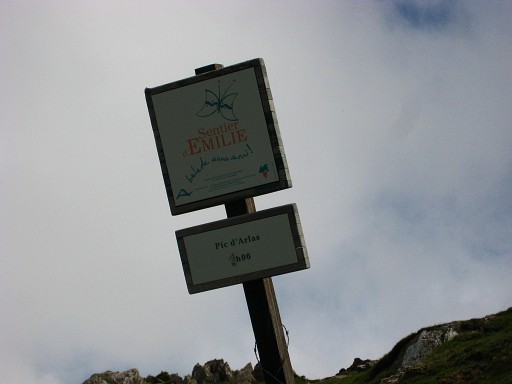 |
When I'm back at the tarmac and
proceed to Arette, I see a bit further this sign, indicating the start
of a yellow trail - a Sentier Emilie, suitable for families - to Pic
d'Arlas. But the other route - see above - seems better to me. |
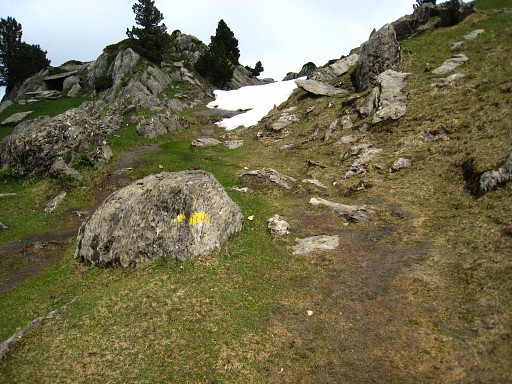 |
The start of that Emilie-trail. |
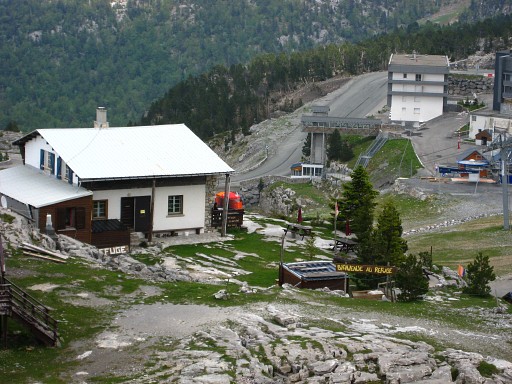 |
I now follow the GR10-waymarks to this refuge: the refuge Jeandel. What a luxury: a shower, a 3-course dinner, wine, chairs, books. This is the end of this 10-days trip, there's too much snow ahead along the border to continue here. The next day I wil traverse with 3 Frenchmen the snow covered karst plateau on the GR10-trail and descend to Lescun and the valley. I manage to reach the same day Lourdes with bus and train to enjoy a day of rest (and a bit of worship). |
previous
trip next
trip  |
|

